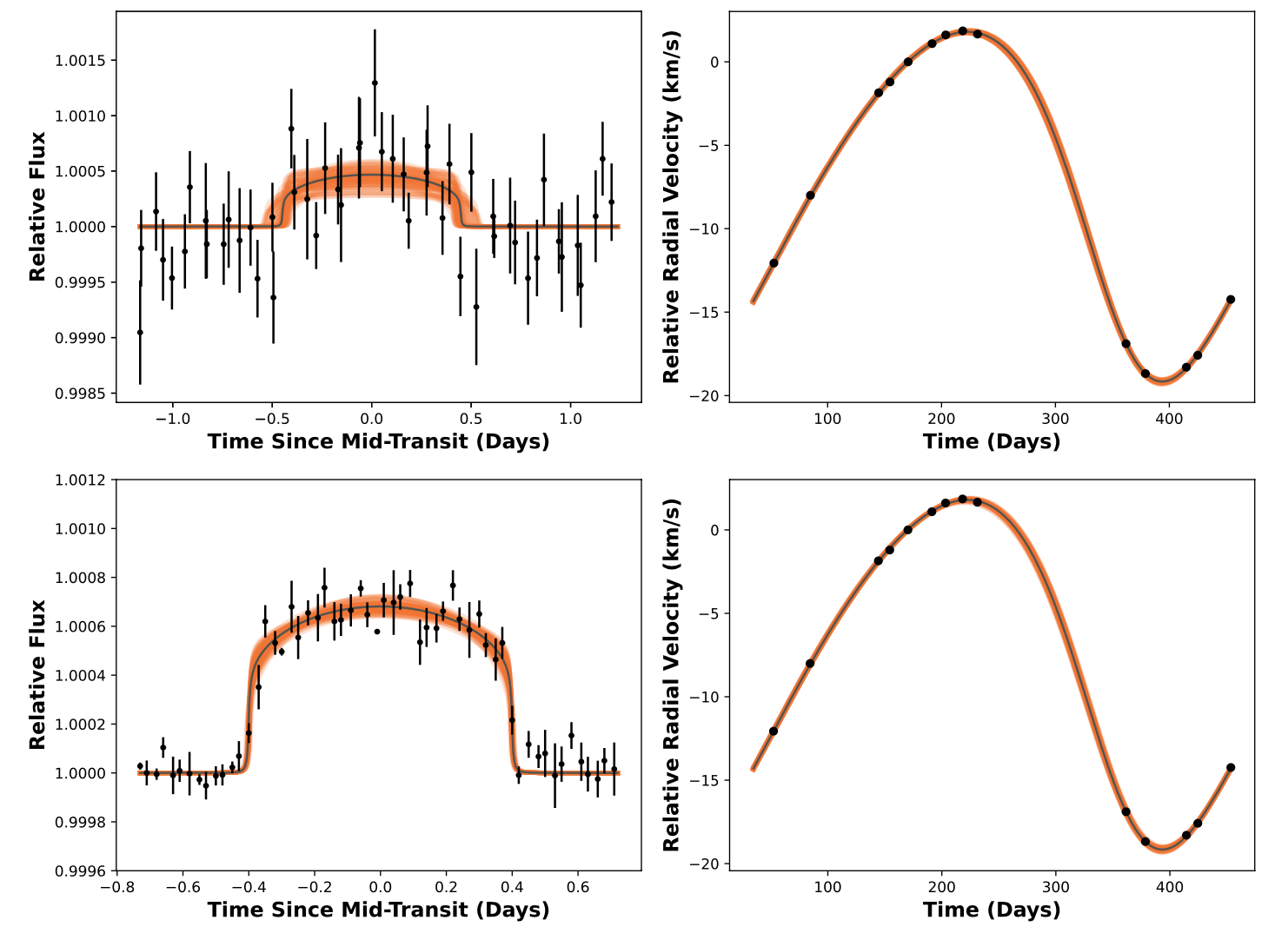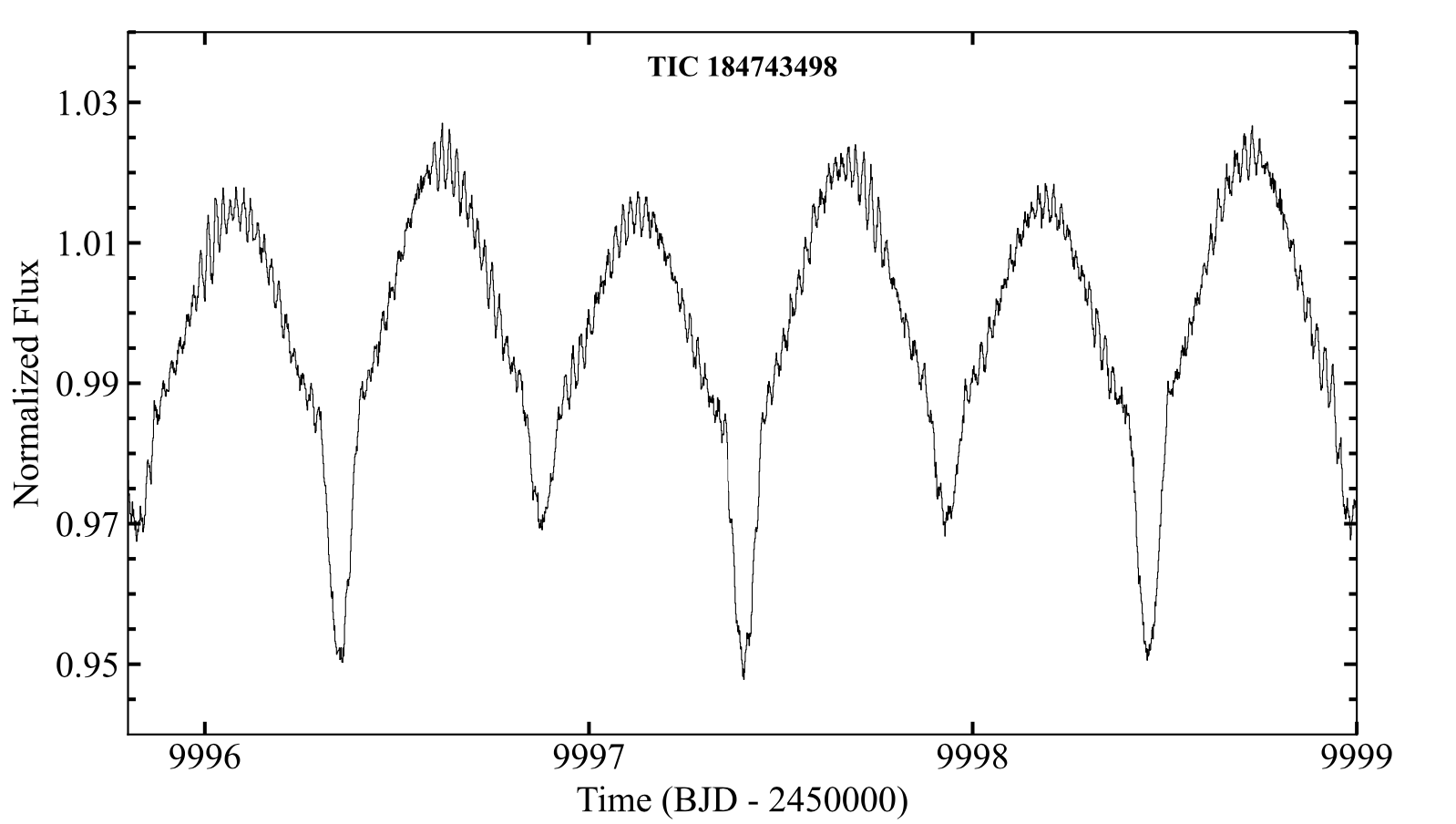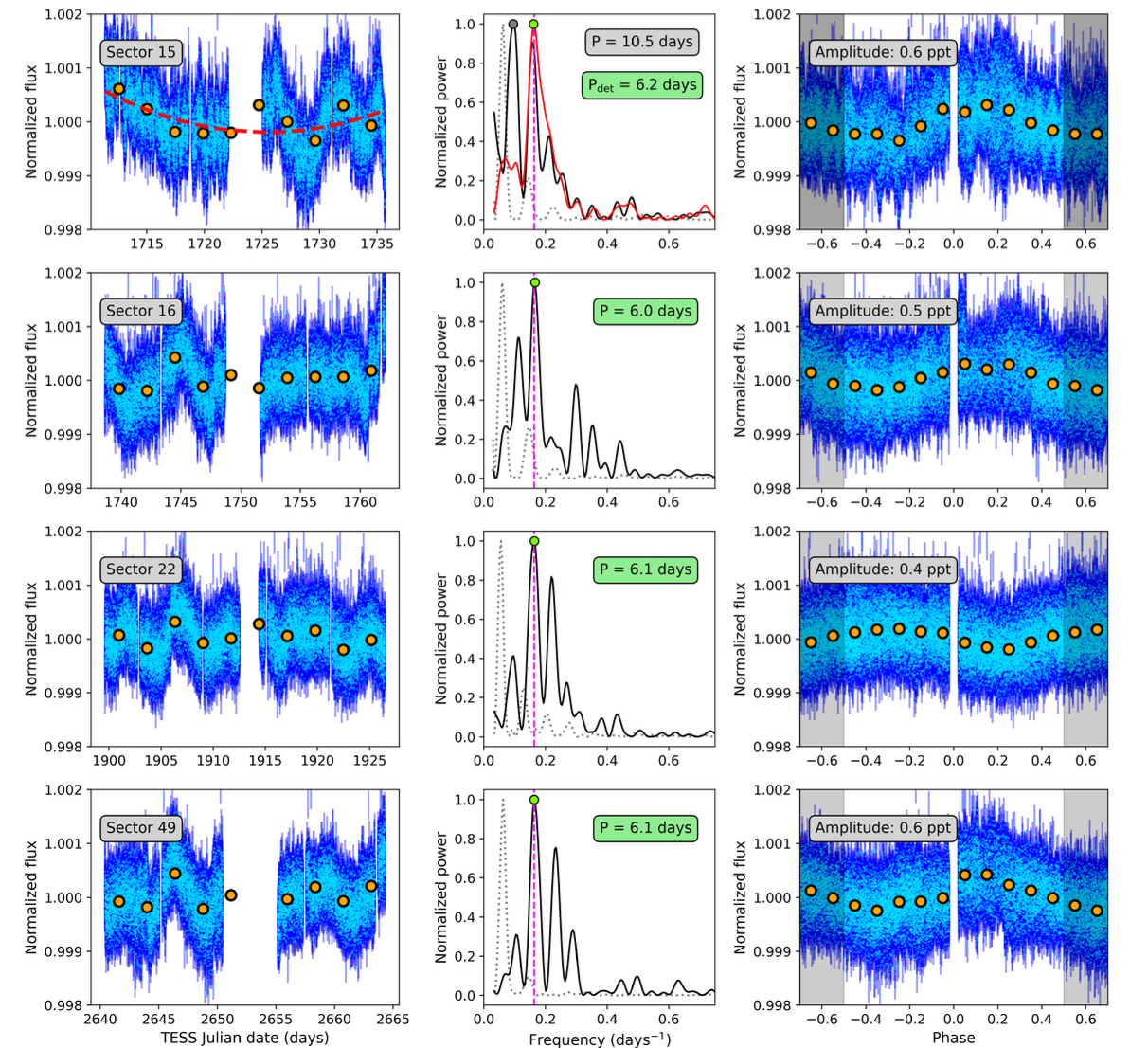Welcome TESS followers to our latest news bulletin!
This week, we are looking at three recent papers from the archive. Enjoy!
The First TESS Self-Lensing Pulses: Revisiting KIC 12254688 (Sorabella et al. 2024) :
Sometimes, a binary system containing a compact object can have just the right orbital and physical configuration such that it is not only an eclipsing binary, but also a self-lensing eclipsing binary. These are systems where the compact object is responsible for a gravitational lensing effect strong enough to produce a brightening “pulse” at primary conjunction instead of a dimming eclipse. Five such systems have been confirmed to date, all from Kepler data. Sorabella et al. (2024) present results from a search for new self-lensing binaries in TESS data. The authors detected a large number of asteroid crossings that mimic self-lensing pulses, demonstrating the feasibility of their search strategy, but did not find new self-lensing candidates. Interestingly, TESS was at the right place at the right time to observe the known system KIC 12254688 during primary conjunctions, and Sorabella et al. (2024) were able to detect two brightening pulses from the system in TESS lightcurves from Sectors 41 and 56. Utilizing short-cadence data, the authors removed common systematics, extracted the two pulses from the binned data, modeled the available photometry and spectroscopy, and obtained best-fit parameters that are broadly consistent with previous results (albeit with larger uncertainties). The authors note that if KIC 12254688 was not known as a self-lensing binary it might have been difficult to identify it as such in TESS lightcurves and argue that self-lensing systems containing a black hole instead of a white dwarf would be comparably easier to detect, especially in data from the extended mission. The two self-lensing brightening pulses from KIC 12254688 reported by Sorabella et al. (2024) are the first such events detected in TESS data.
TIC 184743498: The First Tri-Axial Stellar Pulsator (Zhang et al. 2023) :
Stellar pulsations have long been used as important tracers for the mechanisms and processes underlying the structure, formation and evolution of stars. Photometric observations have helped distinguish several classes of pulsating stars and revealed a complex landscape of pulsation timescales, amplitudes, and modes. For example, rapidly oscillating Ap stars can produce non-radial pulsation modes along an axis that is not only misaligned with respect to the stellar rotation but can be also offset from the center of mass. Zhang et al. (2023) present the TESS-enabled discovery of the tri-axial stellar pulsator TIC 184743498. The target is a close binary system containing a delta Scuti primary star, and was observed by TESS in long candece in Sectors 8, 34, 35, 61 and in short cadence in Sector 62. The binary has a period of about 1 day and shows eclipse timing variations following a parabolic curve which indicate either orbital decay or perturbations due to a third body. The latter interpretation is consistent with Gaia measurements and suggests a ~0.7-1.3 Sun third star with an outer orbital period of ~2,000-6,000 days. The delta Scuti primary has a mass of ~1.8 MSun, radius of ~1.7 RSun, and effective temperature of ~8,500 K, and produces at least nine tidally-tilted pulsation modes. Five of these peak at conjunctions and represent pulsations along the tidal axis, while the other peak at the maxima of the ellipsoidal variations and represent pulsations along an axis orthogonal to the tidal axis and to the angular momentum axis. Thanks to TESS, Zhang et al. (2023) were able to discover the first tri-axial stellar pulsator.
Signs of magnetic star-planet interactions in HD 118203. TESS detects stellar variability that matches the orbital period of a close-in eccentric Jupiter-sized companion (Castro-González et al. 2024) :
HD 118203 is host to a Jovian planet with an orbital period of 6.1 days and eccentricity of 0.3 – a sparsely populated parameter space. The configuration of the system is such that the planet is massive enough and close enough to the parent star that tidal and magnetic star-planet interactions can manifest as observable signatures. Castro-González et al. (2024) combine TESS photometry with spectroscopic measurements and archival observations to search for such signatures in HD 118203 – a relatively bright, nearby star (V ~ 8 mag, distance of ~ 92 pc). The target was observed by TESS in short cadence in Sectors 15, 16, 22, and 49 and, along with the planetary transits, exhibits prominent out-of-transit lightcurve variations as well as indications for a long-term linear trend in the measured radial velocities. The authors report that the sinusoidal photometric variability is present in all four sectors, has a periodicity of ~6.1 days, effectively matching the orbital period of the planet, varies in both shape and in amplitude, and can appear and disappear on orbital timescales. Castro-González et al. (2024) interpret this as a potential signature of magnetic interactions between the star and its planet, note that stellar rotation origin is unlikely, and argue that a confirmation could be achieved through follow-up photometric and spectroscopic observations. Additionally, the authors also refine the orbital ephemeris, and argue that the expected rotation period of the planet is about 3.7 days. Capitalizing on TESS data, Castro-González et al. (2024) were able to find strong evidence for magnetic star-planet interactions in short-period, eccentric planetary systems.
 Fig. 1: Taken from Sorabella et al. (2024). Photometric (left panels) and spectroscopic (right panels) observations of the self-lensing binary system KIC 12254688, along with the corresponding best-fit models. The left panels show the phase-folded data from TESS (upper panel) and Kepler (lower panel).
Fig. 1: Taken from Sorabella et al. (2024). Photometric (left panels) and spectroscopic (right panels) observations of the self-lensing binary system KIC 12254688, along with the corresponding best-fit models. The left panels show the phase-folded data from TESS (upper panel) and Kepler (lower panel).
 Fig. 2: Taken from Zhang et al. (2023). A section of TESS data from Sector 62 for TIC 184743498 highlighting the stellar eclipses, the out-of-eclipse variations, and the pulsations of the delta Scuti primary star.
Fig. 2: Taken from Zhang et al. (2023). A section of TESS data from Sector 62 for TIC 184743498 highlighting the stellar eclipses, the out-of-eclipse variations, and the pulsations of the delta Scuti primary star.
 Fig. 3: Taken from Castro-González et al. (2023). Periodogram analysis of TESS photometry for HD 118203. Left panels: TESS data from Sectors 15, 16, 22, and 49. Middle panels: corresponding periodograms. Right panels: Same as left panels, but phase-folded on the best-fit periods indicated in the middle panels.
Fig. 3: Taken from Castro-González et al. (2023). Periodogram analysis of TESS photometry for HD 118203. Left panels: TESS data from Sectors 15, 16, 22, and 49. Middle panels: corresponding periodograms. Right panels: Same as left panels, but phase-folded on the best-fit periods indicated in the middle panels.